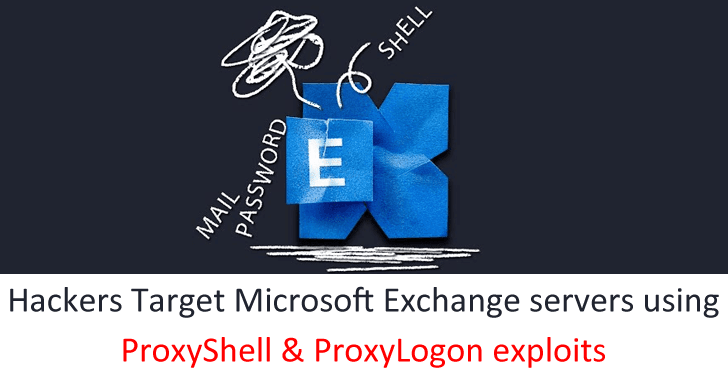Hackers are Targeting Microsoft Exchange servers using exploits to distribute malware. The vulnerabilities allow hackers to bypass detection by sending emails with malware attachments or messages containing malicious links to internal employees. This is done by abusing the Exchange server’s built-in features, ProxyShell and ProxyLogon.
Threat actors use a number of strategies to mislead the user into opening the email and clicking on the malicious attachment. They can impersonate a legitimate sender, include a sense of urgency or click-bait subject line, or use a low-quality crafted email that looks like it was sent from an unprofessional company.
TrendMicro researchers have discovered a clever tactic of using compromised Microsoft Exchange servers to distribute malicious emails to a company’s internal users.
All this is done by sending an infected email to the victim and then forwarding it to all of the victim’s contacts in their address book.
The emails will appear to be sent from the victim’s own account and the subject line will be formatted like a normal email.
Microsoft Exchange infection
It is believed that the hackers behind this attack are from the ‘TR’ group, it’s a well-known hacker group that distributes emails with malicious attachments that drop malware. Even TR has been spotted in the past using the following file formats in their emails:-
- Microsoft Office Files (.doc, .xls, .ppt)
- Rich Text Format (.rtf)
- Portable Document Format (.pdf)
- Single File Web Page (.mht)
- Compiled HTML (.chm)
- Compiled Help File (.chm or .hlp)
- Shell Executable files (.exe, .com, or .bat)
The payloads that are used are:-
- Qbot
- IcedID
- Cobalt Strike
- SquirrelWaffle
Moreover, Trend Micro has claimed that “In the same intrusion, we analyzed the email headers for the received malicious emails, the mail path was internal (between the three internal exchange servers’ mailboxes), indicating that the emails did not originate from an external sender, open mail relay, or any message transfer agent (MTA).”
Since these emails are coming from the same internal network, it is safe to assume that they are legitimate. The tone of the emails is conversational while still maintaining a professional tone.
It’s an excellent tactic used by hackers for not raising any alarms on the email protection systems.
Vulnerabilities Exploited
Here are the vulnerabilities that are exploited:-
- CVE-2021-34473: The pre-auth path confusion
- CVE-2021-34523: Exchange PowerShell backend elevation-of-privilege
- CVE-2021-26855: The pre-authentication proxy vulnerability
Always keep your Exchange servers updated
For later backdoor access the hackers deploy ransomware or install webshells by exploiting both ProxyShell and ProxyLogon vulnerabilities. And these attacks god so bad that without informing the servers’ owners the FBI removed webshells from all the available compromised US-based Microsoft Exchange servers.
That’s why the cybersecurity experts strongly recommend users immediately update their Exchange servers, and make sure the firewall is up to date and well configured.







